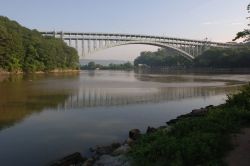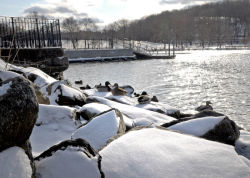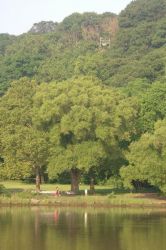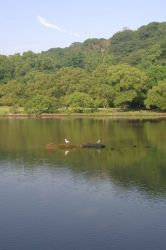Inwood Hill Park
Glaciers in New York City - Inwood Hill Park
Inwood Hill Park now contains the last natural forest and salt marsh in Manhattan, but the land once lay beneath a huge sheet of moving ice. The most recent ice age began about 1.5 million years ago, at the advent of the Pleistocene Era, and lasted until around 10,000 years ago. At the beginning of the Pleistocene, global temperatures dropped dramatically. Huge masses of snow and ice formed in the Arctic, sometimes as thick as two miles. The tremendous weight and pressure of the ice sheet caused the snow underneath to solidify, providing a surface on which glaciers could travel. During the Pleistocene Epoch, there were four glacial advances - the most recent being the Wisconsin ice sheet, which had the greatest impact on the land beneath New York City.
The Wisconsin ice sheet began its southward journey from the Arctic around 100,000 years ago, reaching what is now New York roughly 50,000 years later. By this time, it had lost some of its bulk, although it was still 300 feet thick and stretched from Massachusetts to Montana. As the glacier moved through this region, it deepened the bed of the Hudson River, carved out such geologic features as the Great Lakes and the Finger Lakes basins, and left its mark on the Adirondack mountains. The glacier also deposited tons of gravel and pebbles, moving boulders from the Palisades to Central Park, plowing up topsoil, leveling the earth, and filling in depressed areas with glacial till. This glacial activity sculpted the characteristic terrain of Inwood Hill Park, with its dramatic caves, valleys, and ridges.
Check out your park's Vital Signs
Clean & Safe
Green & Resilient
Empowered & Engaged Users
Share your feedback or learn more about how this park is part of a
Vital Park System

Know Before You Go












